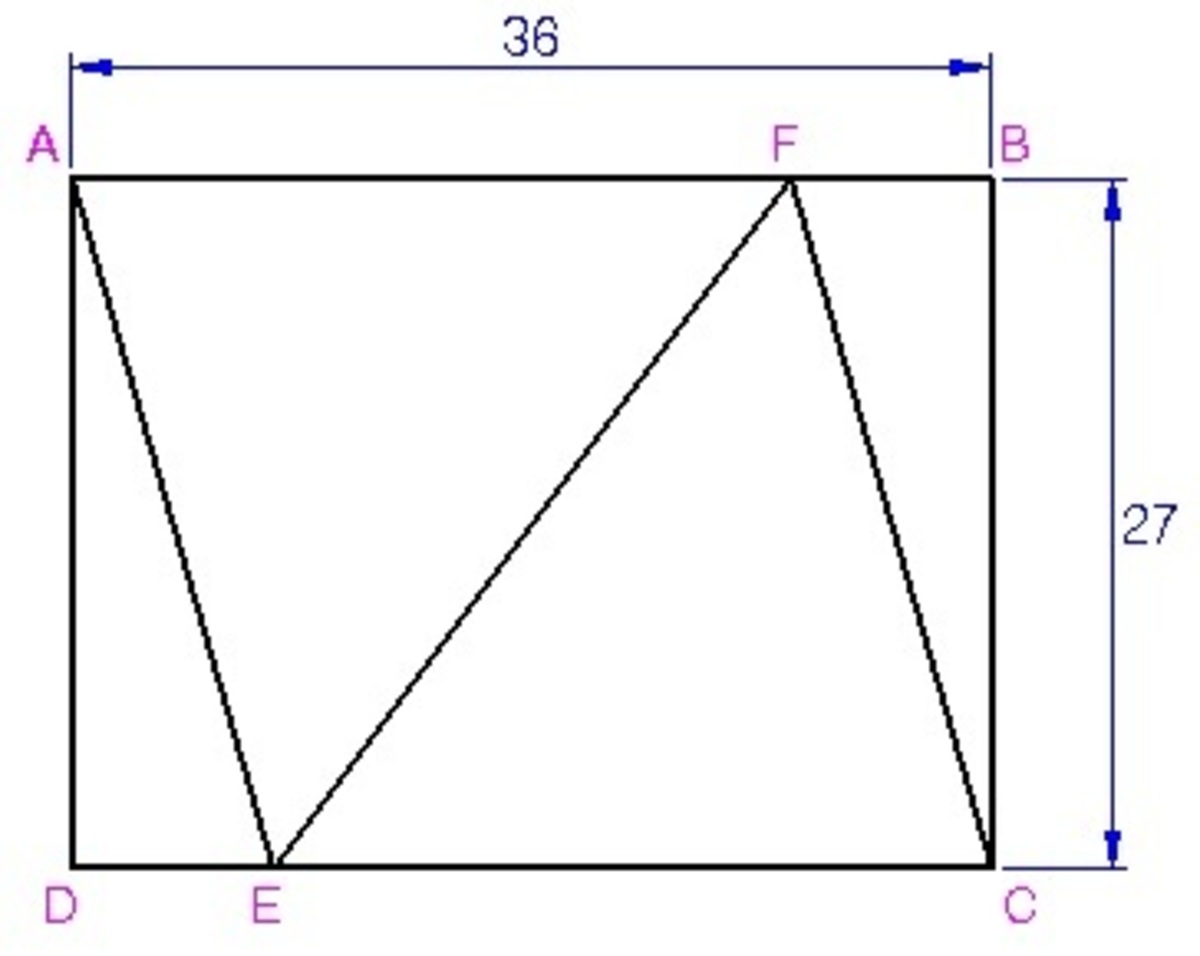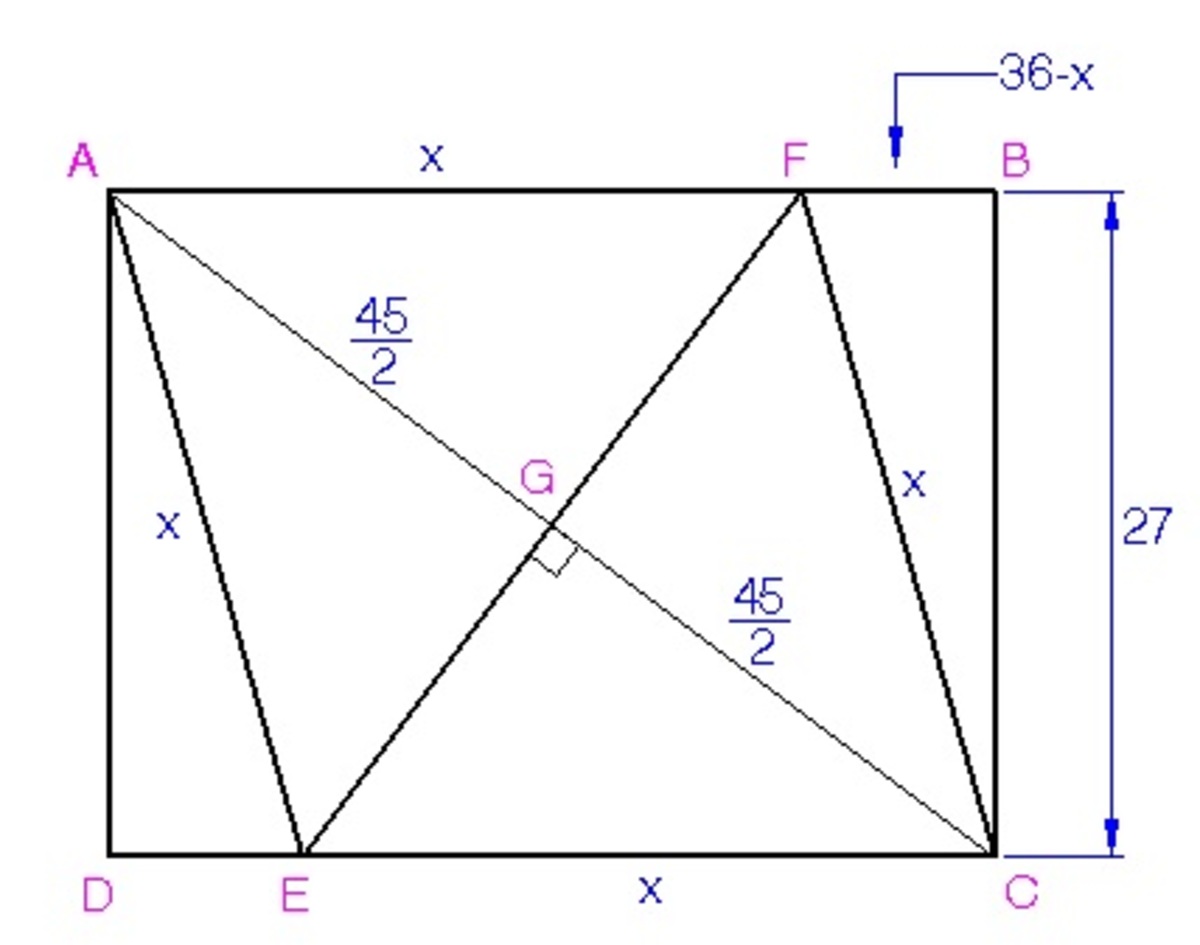A geometry problem by A Former Brilliant Member
 A
B
C
D
is a rectangle with
A
B
=
3
6
and
B
C
=
2
7
. Points
F
and
E
lies on
A
B
and
C
D
, respectively, such that
A
F
C
E
is a rhombus. Find
E
F
. If your answer is of the form
b
a
, give your answer as
a
+
b
.
A
B
C
D
is a rectangle with
A
B
=
3
6
and
B
C
=
2
7
. Points
F
and
E
lies on
A
B
and
C
D
, respectively, such that
A
F
C
E
is a rhombus. Find
E
F
. If your answer is of the form
b
a
, give your answer as
a
+
b
.
Note: b a is in its simplest form
The answer is 139.
This section requires Javascript.
You are seeing this because something didn't load right. We suggest you, (a) try
refreshing the page, (b) enabling javascript if it is disabled on your browser and,
finally, (c)
loading the
non-javascript version of this page
. We're sorry about the hassle.
2 solutions
 Let the each side length of the rhombus be
x
.
Let the each side length of the rhombus be
x
.
Apply pythagorean theorem on △ F B C :
x 2 = ( 3 6 − x ) 2 + 2 7 2 = 3 6 2 − 7 2 x + x 2 + 7 2 9 ⟹ 7 2 x = 2 0 2 5 ⟹ x = 8 2 2 5
Apply pythagorean theorem on △ A D C :
( A C ) 2 = 3 6 2 + 2 7 2 ⟹ A C = 4 5
Since the diagonals of a rhombus are perpendicular and bisect each other, △ E G C is a right △ , and G C = 2 4 5 .
Apply pythagorean theorem on △ E G C .
( E G ) 2 = ( E C ) 2 − ( G C ) 2 = ( 8 2 2 5 ) 2 − ( 2 4 5 ) 2 = 6 4 5 0 6 2 5 − 4 2 0 2 5 = 6 4 1 8 2 2 5
E G = 6 4 1 8 2 2 5 = 8 1 3 5
It follows that,
E F = 2 E G = 2 ( 8 1 3 5 ) = 4 1 3 5
Finally,
a + b = 1 3 5 + 4 = 1 3 9
△ A B C is similar to △ A O F ⟹ A O O F = A B B C = 3 6 2 7 = 4 3
E F = 2 × O F = 2 × 4 3 A O = 2 3 × 2 4 5 = 4 1 3 5
Answer = 1 3 5 + 4 = 1 3 9